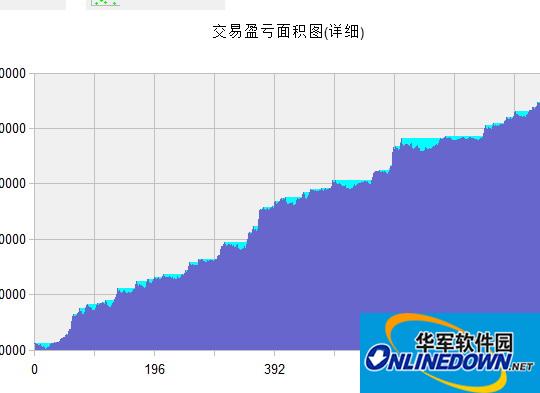Software description
It is the earliest programmed trading software in China that can access the securities and futures markets for automatic trading.

Software attention
1. It is recommended to use Administrator to log in to the operating system. The installation path cannot contain Chinese characters, and the Windows login user name cannot be in Chinese.
2. Compiling formulas using 32-bit TB requires at least Winodws 7. If you need to use formulas on XP, please use Windows 7 and above systems to compile and import the non-source code formulas.
3. The formula system of version TB5.1 and subsequent versions has been upgraded, adding functions such as arrays, and is compatible with the import of old version source code formulas. However, the old version of source code formulas must be recompiled with the new version before they can be imported.
4. The stable version of Trading Pioneer V5.4 supports both the domestic market and the international market.
Features of Trading Pioneer Ultimate Edition
1. Covers the functions of the professional version;
2. Built-in 300 sets of functions and a complete formula system;
3. Unlimited simple syntax design trading system;
4. The source code is open, the operation is transparent, and the indicators are unambiguous;
5. Able to achieve complete fund management and multi-strategy superposition;
6. Powerful testing engine, multi-objective optimization parameters;
7. Detailed system testing and combination testing;
8. Built-in simulated trading system and real-time trading testing;
Description of featured indicators
1. Featured indicators
Trading Pioneer provides a large number of customized indicators from a practical perspective to facilitate market observation and risk control.
Main characteristic indicators: long-short ratio, leverage ratio, increase C, increase C%, long-short market value, etc.
2. Quotes
Increase or decrease C: The increase or decrease of the latest price relative to the closing price of the previous day
Increase C%: The increase of the latest price relative to the closing price of the previous day
Increase or decrease S: The increase or decrease of the latest price relative to the settlement price of the previous day
Yesterday’s position: the closing position of the previous day
3. Account summary
Static equity: equal to the account balance after settlement on the previous day, including margin
Dynamic equity: latest account balance, including margin
Long-short ratio: The risk indicator reflects risk exposure, equal to: (aggregated market value of longs - aggregated market value of shorts)/dynamic equity
Leverage ratio: an indicator that reflects the relationship between account equity and contract asset fluctuations, equal to: net market value/dynamic equity. For example: Leverage = 0.5, contract assets fluctuate by 10%, account equity fluctuates = 10%*0.5=5%, if leverage = 3, contract assets fluctuate by 10%, account equity fluctuates = 10%*3=30%. Note: Locked position does not participate in the calculation
Position market value: Net market value, reflecting the overall unilateral market value summary. Note: Lock-up does not participate in the calculation
Risk level: total margin/dynamic equity
4. Position information
Total positions: reflects the overall position situation, equal to: number of long positions - number of short positions
Average price: reflects the cost price, equal to: total position cost/total position amount
Net market value: That is, the unilateral net market value of the contract, lock-up is not included in the calculation, and is equal to the absolute value of (long market value - short market value)
Leverage ratio: reflects the ratio of net assets held in contracts to client assets, equal to: net market value/dynamic equity. Note: Lock-up does not participate in the calculation
Buy position: Long position
Average buying price: the cost price of long positions
Long market value: total market value of long positions
Sell position: short position
Average selling price: cost price of short position
Short market value: total market value of short positions
5. Day trading
Price slippage for long positions = commission price – average transaction price; price slippage for short positions = average transaction price – commission price
Note: Record which functional module the order comes from so that customers can check the execution status of smart transactions. Common sources include Fast Lane, Keyboard Player, StrategyEasy, Arbitrage, etc.


































it works
it works
it works